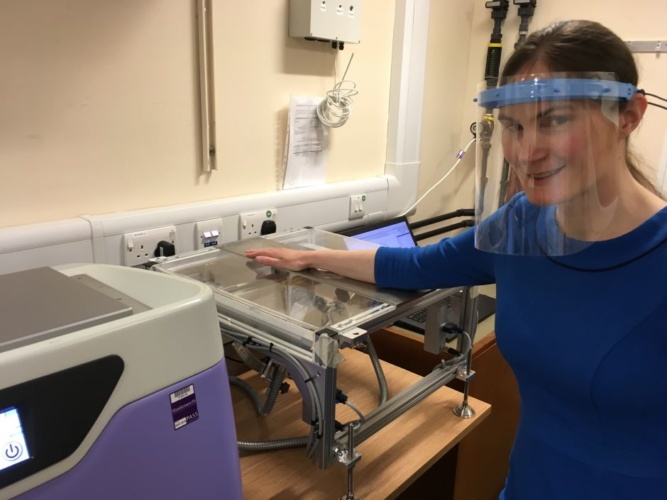
The Terabotics project will use probes that use terahertz radiation (T-rays) to scan for tumours under the skin while medical-grade surgical robots will be adapted to use these scans to guide them in removing tumours in skin and colorectal cancer patients more precisely.
Medical robot navigates heart to help fix leaky valve
If successful, the researchers hope it could lead to real-time diagnosis for cancer patients, shorter waiting periods for cancer surgery, and more comprehensive removal of tumours with reduced need for follow-up surgery.
The five-year project, which has received funding of £8m from EPSRC, is a collaboration between Warwick University, University Hospitals of Coventry and Warwickshire, plus the Universities of Leeds and Exeter. Terabotics, which starts in September 2021, aims to eventually trial the technology with patients attending cancer services at University Hospitals Coventry and Warwickshire and Leeds Teaching Hospitals NHS Trust.
Previous work from Warwick University’s Department of Physics has shown that T-rays can be used to detect very subtle changes in the outermost layers of skin, and the technique has already been demonstrated on healthy volunteers. This will be the first time that it will be studied in patients within an active cancer process.
As well as assessing the effectiveness of T-ray technology in diagnosing cancers compared to standard care, the project aims to incorporate the technology into surgical robots to guide them more accurately when detecting tumours during colonoscopy and removing them during surgery.
In a statement, principal investigator Professor Emma Pickwell-MacPherson, from Warwick University’s Department of Physics, said: “What we will be testing is our hypothesis that we are able to detect a buried or hidden tumour. We think our terahertz probe will be able to detect those through looking at the transient response of the skin.
“Somebody might already be diagnosed with cancer, but the actual extent of that cancer may not be known. For example, in skin cancer patients, the THz probe will image the visible tumour and the surrounding area to better determine the extent of the tumour that is beneath the surface. This will enable the whole tumour to be removed in one go, rather than incrementally. In turn, this enables better planning for reconstruction and speeds up the procedure.”
Initially, the researchers will focus on adapting the T-ray probes to work with the surgical robots, miniaturisation of the technology and refining the design to provide more diagnostic parameters.
Later stages of the Terabotics project will involve trialling the technology with patients with a known or suspected cancer. Those attending cancer services at University Hospitals Coventry and Warwickshire will be offered the opportunity to participate alongside their routine care. Colorectal cancer patients will be seen at Leeds University, where an endoscopic probe is being developed specifically to examine the colon.
“Robotics is increasingly used in the operating theatre as it brings superior accuracy and unload some of the burden of the procedure from the surgeon,” said Leeds University’s Professor Pietro Valdastri. “Adding THz perception capabilities to our robots is a new exciting avenue of research that has the potential to improve cancer patient quality of life in the next 5 to 10 years.”




Nanogenerator consumes CO2 to generate electricity
Whoopee, they've solved how to keep a light on but not a lot else.